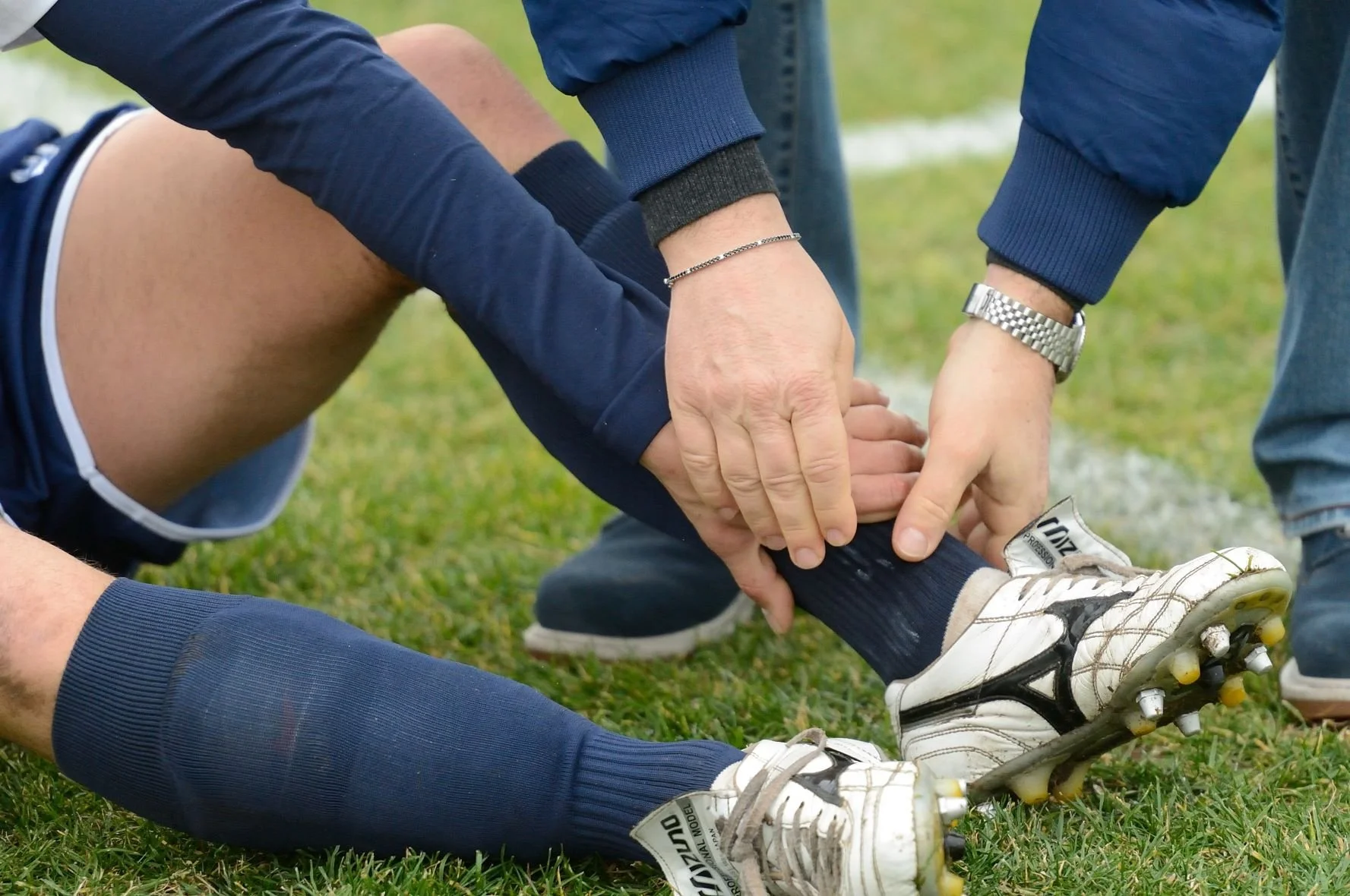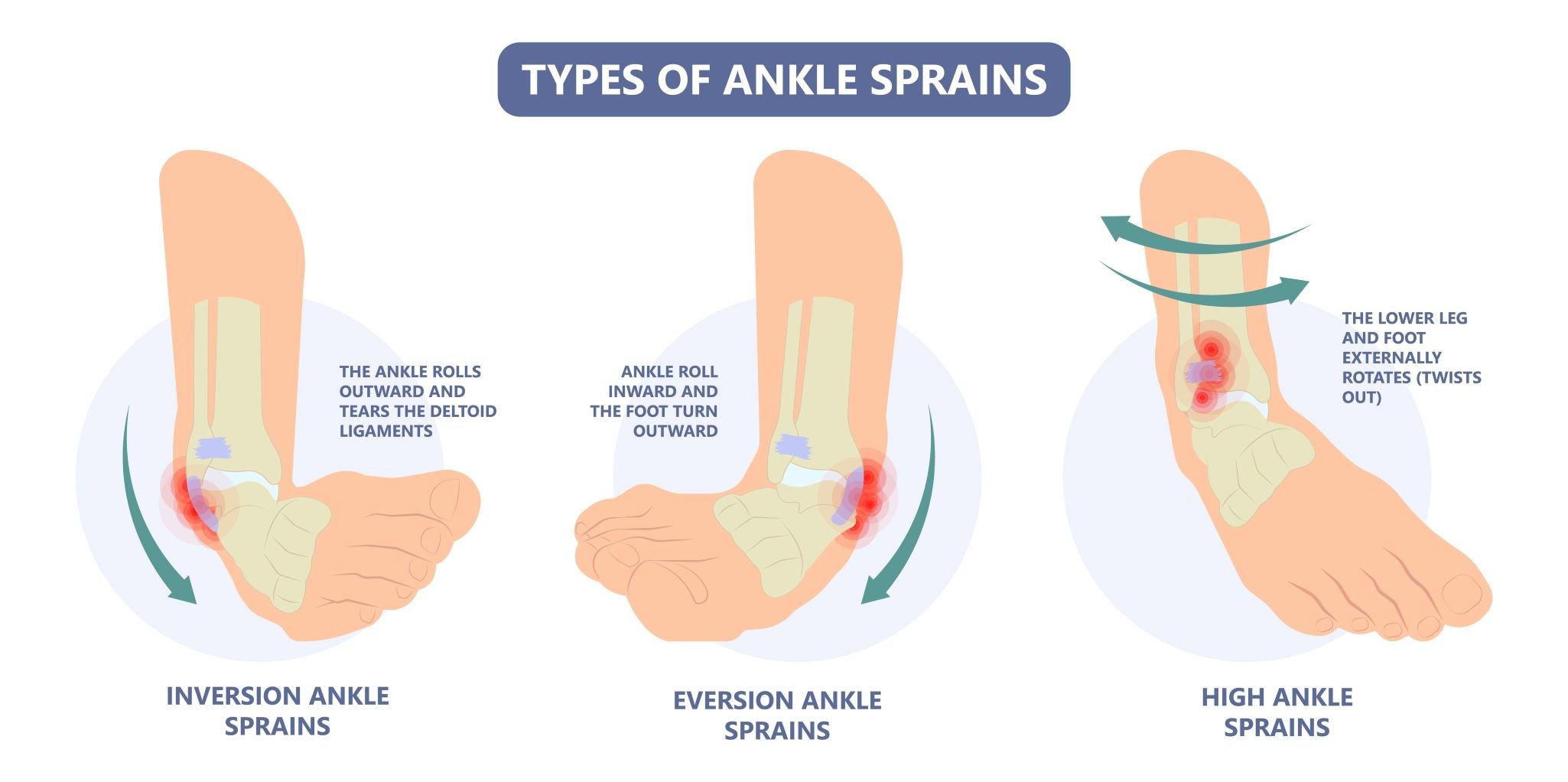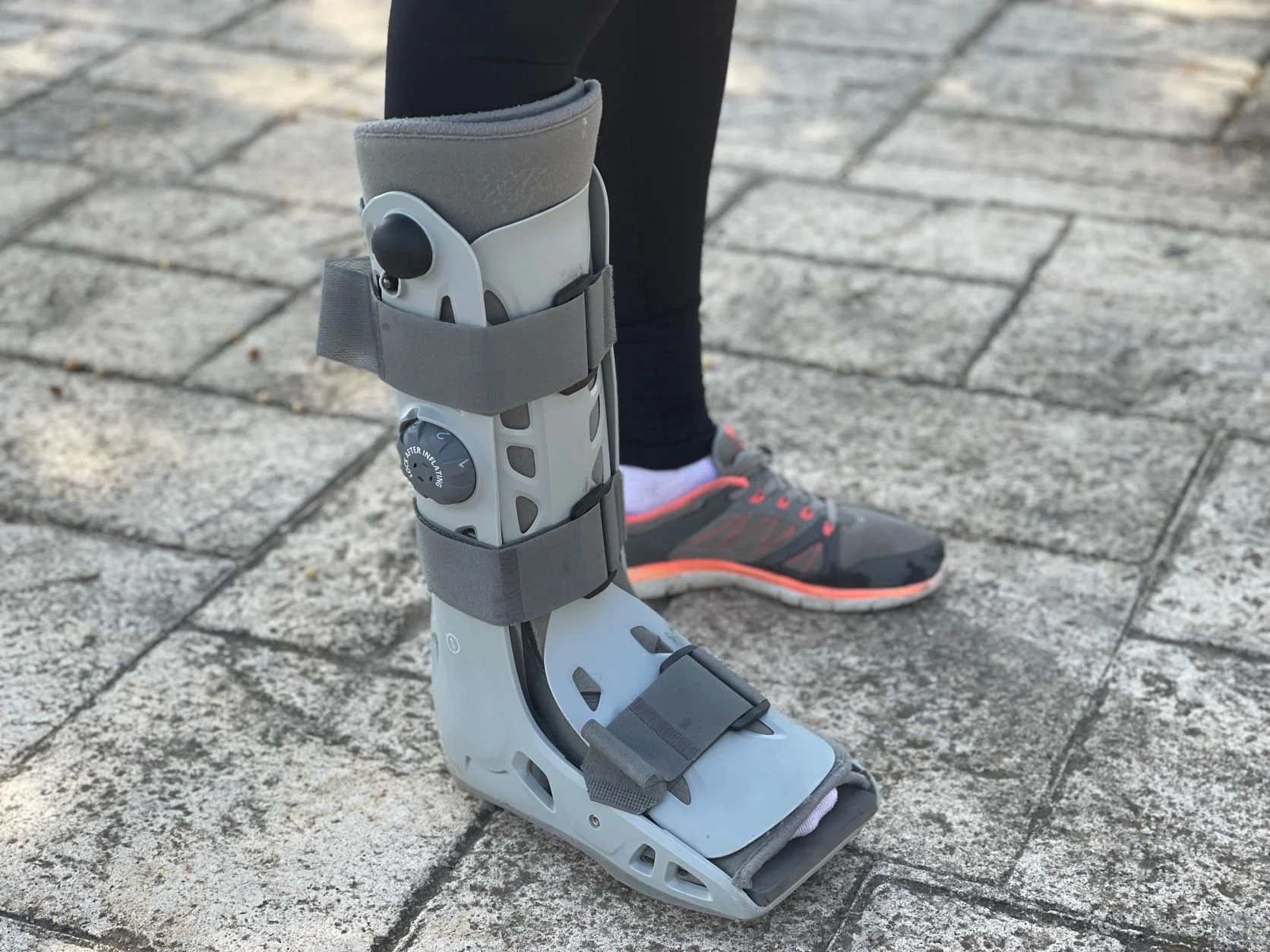How To Recognize a High Ankle Sprain
Whether you're playing sports, out for a trail run, or just stepped the wrong way while walking, that unexpected twist — an ankle sprain — can happen to anyone.
The majority of ankle sprains that you hear about are low ankle injuries or inversion sprains. These account for about 90% of all sprains.
High ankle sprains, also called syndesmosis injuries, aren't nearly as common, but they can be much more serious and take longer to heal.
In this blog post, we will focus on high ankle sprains, including:
What is a high ankle sprain?
How do you know if you’ve suffered a high ankle sprain?
How is a high ankle sprain treated?
What Is a High Ankle Sprain?
A high ankle sprain occurs when you stretch or tear the ligaments above the ankle joint that connect the two lower leg bones (tibia and fibula). This group of ligaments is called syndesmosis. They work together as shock absorbers to stabilize the ankle joint when it's under force and prevent your lower leg bones from spreading too far apart.
Unlike the most common sprain (inversion), where the ankle rolls inward, high ankle sprains are often caused by a sudden twisting of the foot outwards.
This type of injury is more likely to occur in high-impact sports like football, soccer, lacrosse, and hockey but can also happen while skiing. Think of a ski racer "catching a gate" so that the foot spins out in external rotation.
High ankle sprains can range from mild to severe, depending on the amount of damage to the ligaments. The three grades of sprains are:
Grade I sprains - mild stretching or tearing of the ligaments
Grade II sprains - partially torn ligaments
Grade III sprains - complete tear of the ligaments
How Do You Know if You’ve Suffered a High Ankle Sprain?
Here are some symptoms that can help distinguish a high ankle sprain from other types of sprains or ankle injuries:
Pain in the front and above the ankle, especially when bearing weight or rotating your foot outwards
Worsening pain during activities that cause you to flex your ankle, such as climbing stairs
Tender to the touch above the ankle
Some swelling above the ankle
Bruising above the ankle
One challenging aspect of high ankle sprains is that they may not swell as much as traditional ankle sprains. The absence of this symptom can cause people to underestimate the severity of their injury.
If you suspect you have suffered a high ankle sprain, it is important to see an orthopaedic specialist for an accurate diagnosis.
How Is a High Ankle Sprain Treated?
The majority of high ankle sprains can be treated successfully with conservative measures, including:
RICE (rest, ice, compression, and elevation)
Over-the-counter medications to manage pain and reduce swelling
Crutches or a boot to keep the weight off the injury
Physical therapy to regain strength and prevent a recurring injury
Surgical intervention is only recommended in cases where a ligament has completely ruptured or there is damage to the surrounding bones.
As with any injury, the recovery timeline will often depend on the extent of damage to the ligaments.
On average, it can take 6-8 weeks to return to your normal activities for mild to moderate high ankle sprains. If surgery is required, recovery generally takes 3-4 months.
High Ankle Sprain? Contact Team Elton Today!
Dr. Elton and his team are known throughout Eagle and Summit County for their expertise in treating syndesmosis injuries and will work with you to develop a treatment plan that gets you back on your feet.
If you've experienced a high ankle sprain or another ankle injury, call (970) 476-7220 today or submit an online appointment request.



